A Visual Look At The Different Types of Diamond Cut Grades
By now, you should know cut is one of the most crucial factors when it comes to selecting a diamond. Before we get into more serious stuff, I want to share a little history about the evolution of diamond cut grading.
Back in 2005, GIA was the first gemological lab to create the grading system and they were also the first lab to introduce the concept of having a cut grade in round diamonds.

Since then, other gemological labs started to develop their classifications for cut grading. Most notably, the American Gem Society (AGS) Laboratory created a numerically based cut grading system that assesses the light performance of a diamond.
Today, we have reached a stage where scientific research has enabled us to estimate the brilliance and beauty of a diamond based on its proportions. One such tool developed by GIA is the FacetWare Cut Estimator.
Registration for an account is free and the tool is available to the public. Once you are logged in, you can plug in the numbers from the grading report and get an instant estimate of the diamond’s cut grade.
Various Categories of Cut Grades For Round Diamonds
First of all, let me be extremely clear about grading labs. The ONLY diamonds you should buy are those graded by GIA or AGS. If you buy a diamond graded by any other lab or has an in-house “certification”, you can expect to get ripped off because of inflated ratings.
It’s as simple as that.
GIA and AGS are the world’s leading authorities in diamond grading and they offer consistent grading standards. When it comes to cut grading, this is how diamond cut is presented in a GIA and AGS diamond grading report respectively.


While GIA and AGS may use a slightly different system to assess diamonds, there is one thing that is ubiquitous. The overall optical performance a diamond displays is a key component in determining its cut grade.
Without getting into the nitty gritty details here, I highly recommend you stick to a minimum cut grade of Excellent and settle for nothing less.
STAY AWAY from Good/Fair/Poor categories. Don’t throw your money down the drain by buying poorly cut diamonds. In fact, you are far better off purchasing cheap simulants than spending money on a diamond that doesn’t sparkle well.
Here Are My Interpretations of the Different Cut Ratings
I don’t know about you but when I’m buying a diamond, I only expect to buy diamonds with the BEST sparkle and brilliance. I personally set extremely high standards for cut quality and I suggest you do the same when shopping for an engagement ring.
Let me interpret the different ratings and explain them in layman terms for you:
- Ideal/Excellent: Not all are good. You need to be selective to pick out the best.
- Very Good: Mediocre diamonds that have poor brightness and brilliance.
- Good: Badly cut diamonds with bad proportions and scintillation.
- Fair: Absolutely vile. Diamonds look overly dark and lack contrast.
- Poor: Worthless junk. Diamonds have severe issues and are visibly ugly.
The majority of the diamonds in the market are cut to garbage standards and the GIA cut scale classifies them in a “polite” manner. If a diamond doesn’t have an Excellent cut rating (GIA) or Ideal cut rating (AGS), don’t even bother wasting your time on it.
Now, you might be wondering if the “easy” way to pick a diamond would be to choose one from the Excellent or Ideal cut rating category. However, the problem here is that the GIA cut grading system is very broad and you get a wide range of cut quality even in the triple excellent range.
Comparatively, the AGS cut grading system is more stringent and robust but you will still need to do your due diligence and be selective. The bottomline is, you need to go beyond the cut rating and use tangible data like the ASET or Idealscope images to help you make the final selection.
What Does a Perfectly Cut Diamond Look Like?
To give you some perspective of what defines a “perfect” cut diamond, watch the following videos to see how a well-cut diamond looks like in real life. Feel free to click on the respective links below to view full details of each diamond.
How Round Diamonds From Different Cut Grades Look Like
AGS Ideal Cut Diamond Examples
Most AGS ideal cut diamonds have strong light return and great scintillation. Both diamonds below receive the best cut grading of 000 from AGS and I want you to look at them to see if you can spot differences between them.
The diamond on the left is one that is cut with superb precision and performance. This is a textbook example of an ideal cut diamond I would buy. In fact, you can see the distinct arrows patterning in the video listing.
On the other hand, the diamond on the right is a terrible choice. The ASET in the grading report shows mediocre contrast patterning and light leakage. Even though this diamond has the same exact AGS 000 grade, it pales in comparison to the other stone.
Excellent Cut Grade Diamond Examples
The GIA triple excellent cut range of diamonds is a mixed bag. You will mostly find mediocre diamonds and will rarely be able to find one that has top-notch light return and cut precision.
FYI, in order to find a single GIA diamond that has great light return and cut precision, I had to dig through hundreds of GIA 3Ex diamonds to cherry pick the diamond on the left.
As for the other diamond, it’s the typical stuff you will find in the GIA excellent cut range and you can probably tell that it is poorly cut.
Very Good Cut Grade Diamonds
The GIA Very Good cut grade consists of diamonds that have issues with brightness, scintillation and finish. For the record, I will NOT recommend buying any diamonds in this cut grade.
In this category of diamonds, you can expect to see poor performance and increased darkness in the diamonds. You will also start to see more diamonds with splintery patterning and poor weight-to-size ratios.
As you can see from the images above, the very good cut diamond on the left displays decent optical symmetry but don’t let this fool you. It doesn’t necessarily mean it will look more brilliant than another diamond with poor optical symmetry.
The bottom-line here is that the brightness and brilliance of a diamond are very much dependent on facet proportions and not so much on its optical symmetry.
Good Cut Grade Diamond Examples
Really, there’s nothing good about the GIA Good cut rating. You should never consider buying diamonds within this cut grade unless you want your diamond to look like frozen spit.
Most diamonds are cut with excessively steep crown angles and/or shallow pavilions because the cutter wants to maximize weight retention for more profits. As a result, many diamonds with Good cut ratings have problems like nail heads and fish eyes.
The diamonds in this range are lackluster and have poor brilliance. Sadly, a huge percentage of round diamonds in the current market falls into this range of quality.
Fair/Poor Grade Diamond Examples
This is the bottom of the barrel when it comes to diamond cut quality. Fair and Poor cut diamonds usually have steep crowns and steep pavilion angles which gives them a really dark looking appearance. This makes them look extremely small for their carat weight.
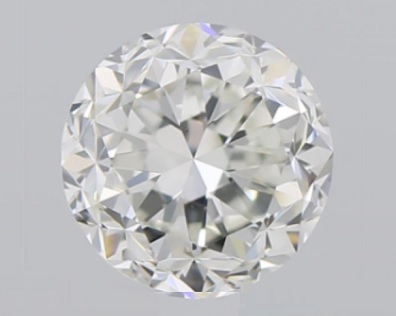
GIA #2306130130
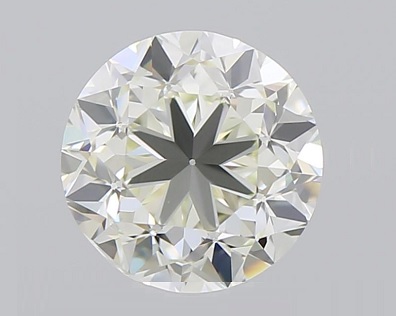
GIA #1305609404
Because of their abysmal proportions, their brilliance and sparkle are horribly affected. Avoid fair and poor cut diamonds like the plague!
Summary And Recap of the Diamond Cut Grades
If you want to buy a lively and sparkly engagement ring, you should avoid diamonds with a Very Good cut grade or below.
As a consumer, you also need to understand that even if 2 diamonds have the same cut rating on paper, they can have completely different appearances. Using the two AGS ideal cut diamonds (triple 000) as examples, you can clearly see that one has a more consistent contrast patterning over the other.
Likewise, you can also see a similar phenomenon within the GIA cut grades. The reason behind this is that within each grade, some degree of variations is allowed as long as they are within the cut rating’s tolerance.
And as I said earlier, the GIA excellent cut grade is very broad. If you want to separate the wheat from the chaff, you need to use cut performance data to analyze the diamonds.
Vendors like White Flash, Brian Gavin and James Allen are some of the best vendors to shop for engagement rings because of their high quality diamonds and the amount of tangible information they provide in their listings.
Besides cut proportions, there are also other factors that can affect a diamond’s cut grading and overall appearance. I will go into more details on the next page.
Related Articles
Leave A Comment


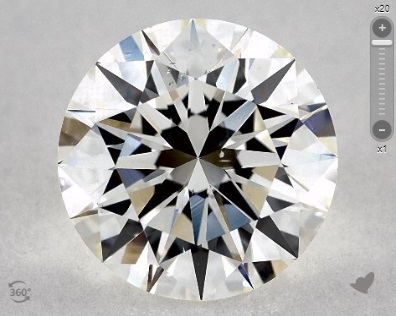
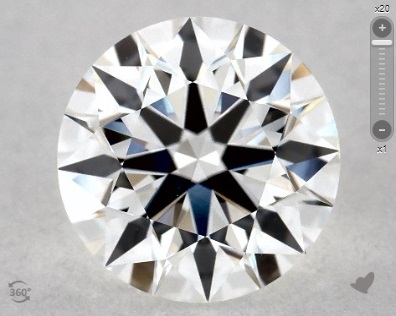
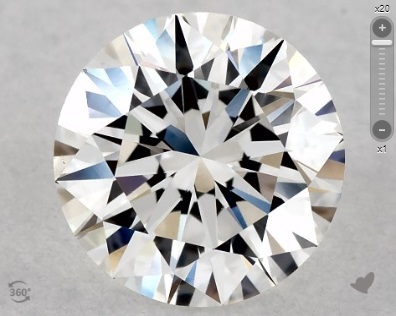
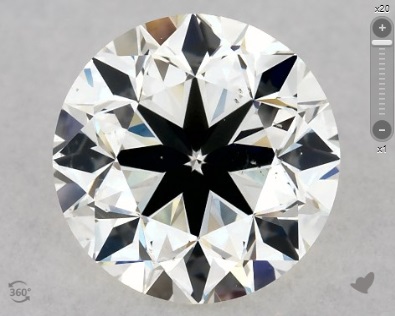
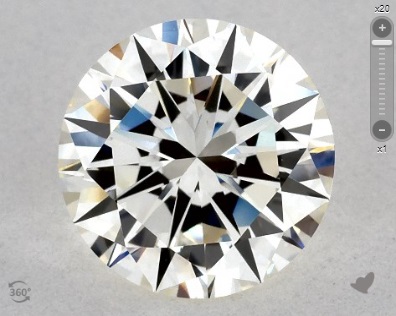
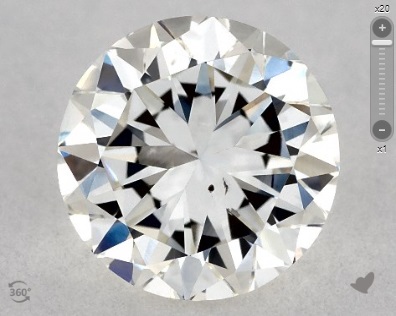
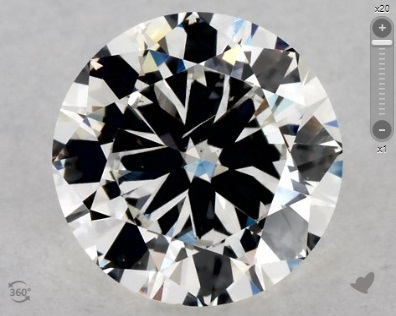
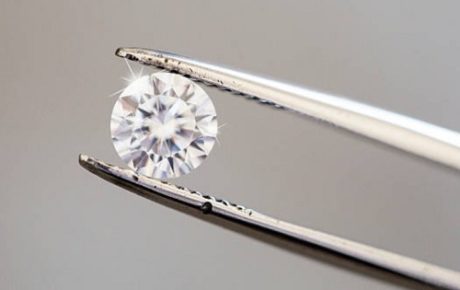
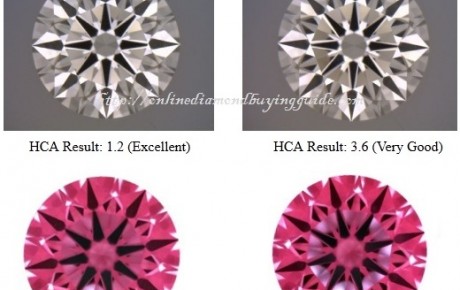
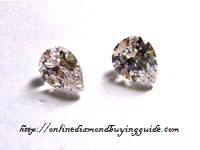










18 Comments
I have a question about the FacetWare program. I bought a GIA graded diamond and have the Dossier report on hand. I’m sure I plugged in the values into the software correctly and it returned an Excellent grading.
However, on my report, the cut grade is listed as Very Good. Do you know why? Is very good cut diamond ok? Do you have a side by side diamond cut comparison of excellent vs very good cut?
Janet
To the best of my knowledge, the FacetWare program uses the same system and algorithm that real life lab graders use when examining a stone.
Do note that the entire grading process of a round diamond consists of a few parts.
1) Observation of the diamond under 2 different lighting for fire, pattern and brightness.
2) Proportions based grading (table %, depth % etc…).
3) Symmetry and polish ratings.
The FacetWare program covers only one aspect (2) of the inspection process. If your diamond takes hit in any factors that lie in (1) or (3), the cut grade is downgraded. That means to say that your diamond was downgraded to a very good cut grade because it failed visual inspection and that is not a good sign.
I had stated very clearly and will say this again. Very good cut diamonds are not ok. They have cut or proportioning deficiencies.
The Dossier report lists both polish and symmetry ratings as Excellent. In this case, it is the observational process that causes the diamond to be graded as a Very Good? Are there any tips on how to tell good diamonds from bad?
Yes. I am very sure that this is the case. The best way for a layperson to learn how to tell good diamonds from bad is to use tangible data and don’t get suckered in by the jeweler’s lighting. Bad diamonds look good in those special lightings but a poorly cut diamond will look dead outside of these lightings. For starters, don’t even get a Very Good cut to begin with. Please heed my advice and only consider the ones from the Excellent cut or Ideal cut range.
I found a stone that has Excellent polish and Excellent symmetry but the diamond cut grade is just Good. If the symmetry is Excellent I dont understand why the Good rating for the cut. The diamond is lovely though with a G color. Please explain and tell me what does a good diamond look like.
Polish and symmetry grades are only part of the equation. GIA looks into a diamond’s proportions as well as a physical examination of the diamond under various lighting conditions for sparkle, patterning and scintillation. The stone you were looking at failed terribly at one or more of these aspects.
Paul,
Great site. Learned quite a bit. It’s fascinating to see the differences between a very good vs excellent cut diamond. Can you please help me with selecting the best diamond (and tell me why) out of the ones below?
https://www.jamesallen.com/loose-diamonds/cushion-cut/1.81-carat-h-color-vs2-clarity-sku-658574
https://www.jamesallen.com/loose-diamonds/cushion-cut/2.00-carat-h-color-vs1-clarity-sku-597854
https://www.jamesallen.com/loose-diamonds/cushion-cut/1.74-carat-h-color-vs2-clarity-sku-730233
https://www.jamesallen.com/loose-diamonds/cushion-cut/1.51-carat-g-color-vs2-clarity-sku-631462
https://www.jamesallen.com/loose-diamonds/cushion-cut/1.82-carat-h-color-vs1-clarity-sku-450593
Any help on the diamond cut comparisons would be greatly appreciated. Thank you!
Depends on what you are really after. Cushion shape stones have slightly different diamond cuts and styles depending on their facet structure and arrangement.
For a diamond with pinfire flashes of light return, this would be the best option: https://www.jamesallen.com/loose-diamonds/cushion-cut/1.81-carat-h-color-vs2-clarity-sku-658574
For a different flavor of sparkle/scintillation, this would be the best option for light performance: https://www.jamesallen.com/loose-diamonds/cushion-cut/2.00-carat-h-color-vs1-clarity-sku-597854
Thank you for the prompt reply. Which one would be the best bang for the buck? How about cut? Are there differences between very good vs ideal cut? Light performance (outside of the 2.0 carat)?
As I mentioned earlier, the light performance of these 2 diamonds differ in their characteristics. Both diamonds have good optics for the type of sparkle they offer. I personally gravitate towards this diamond: https://www.jamesallen.com/loose-diamonds/cushion-cut/2.00-carat-h-color-vs1-clarity-sku-597854 because I like its scintillation pattern more. With fancy shape diamonds, the labels that vendors put on stones to segregate them between very good vs ideal cut is largely based on algorithms and should be taken with a pinch of salt.
Hi Paul,
I am shopping for a Cushion shaped yellow diamond and I was wondering if the non-round diamond cut follows the same principle as the round ones?
I was also browsing the Leibish website and reading the GIA reports but it seems that a few things are missing for the Cushion diamonds compared to the round ones.
With yellow diamonds, the selection process is completely different for colorless diamonds (even if you are choosing a round canary stone). This is because color is the more important factor and with colored diamonds, the way to analyze cut quality is different from non colored stones. Colored diamond GIA reports do not have cut grades and that’s normal.
Colorless diamonds – light performance and sparkle is key.
Colored diamonds – the way the diamond is cut needs to reinforce color and are generally cut deeper. This is true for cushion shaped yellow diamonds.
I actually bought one canary diamond ring for my wife recently: https://beyond4cs.com/fancy-colored/cushion-cut-fancy-intense-yellow-diamond-engagement-ring/
I need help reading the idealscope images for a couple of diamonds I have selected on James Allen. Can you do me a favor and help me analyze them?
Sure. You may want to attach those images as well as the links to the diamond listings and send it via email to me. Otherwise, you can also try your hand in reading the idealscope images yourself using the chart here.
Thanks for putting together this guide. I asked the jeweler to request a diamond with those specs from the diamond vendor and they came back with something they said meets all the requirements. Not sure if I’m mis-reading but I thought the depth is off in comparison to your diagram. Would appreciate if you could take a look and provide your input on whether this is sound on paper before I request other images as outlined in the guide. Thank you!
On paper, the proportions are fine. It passes the first round of checks and now, you will need tangible data like videos, magnified photos and scope images to confirm the diamond’s appearance and cut quality.
I have a 14 K wide Gold band with a 1.57 Karat round brilliant diamond I/I1 IGI # Laser # inscribed inside. Also it has
6 brilliant round small stones (3 on each side) .07 Karat each G-H/VS1-VS2. It was purchased in 2009. Total weight 1.99 Karats. I need it resized. I would rather update the ring into a new setting leaning more to a 2021 look. I’d want to use my stones and then buy a new band adding other stones to update the look .Wanting to upgrade the overall look and add some extra fire/sparkle to the set.. Would the newer stones need to be the same grade? Will my stones work well with another style setting. I’m thinking of buying a white gold band if I upgrade to a new setting. Your thoughts will be appreciated.
Most melee diamonds in a setting aren’t of good quality by my standards and most jewelers will not want to use them for their settings because of manufacturing issues. When jewelers create a setting with sidestones, they do need to match the melees properly. For them to take in the old melee stones and be forced to work with them because they need to make adjustments to the setting will require additional costs and custom designs. Any savings that you think you are getting will end up costing you more and it’s silly to go this route unless ALL the smaller diamonds possess special meaning or symbolism to you. In which case, a custom setting will be what you need. The sidestones of the new setting should be matched to within 2 color grades